So, you want to know which keywords will most likely convert visitors into buyers?
In this quick and simple guide, you’ll learn how to find and use buyer intent keywords to boost your sales leads or sales.
What are buyer intent keywords?
Buyer intent keywords are the words and phrases potential customers type into search engines when they’re looking to buy a product or service.
From my study of 85,000 keywords, 92.4% of keywords have buying intent, whereas 9.1% have purchase decision intent.
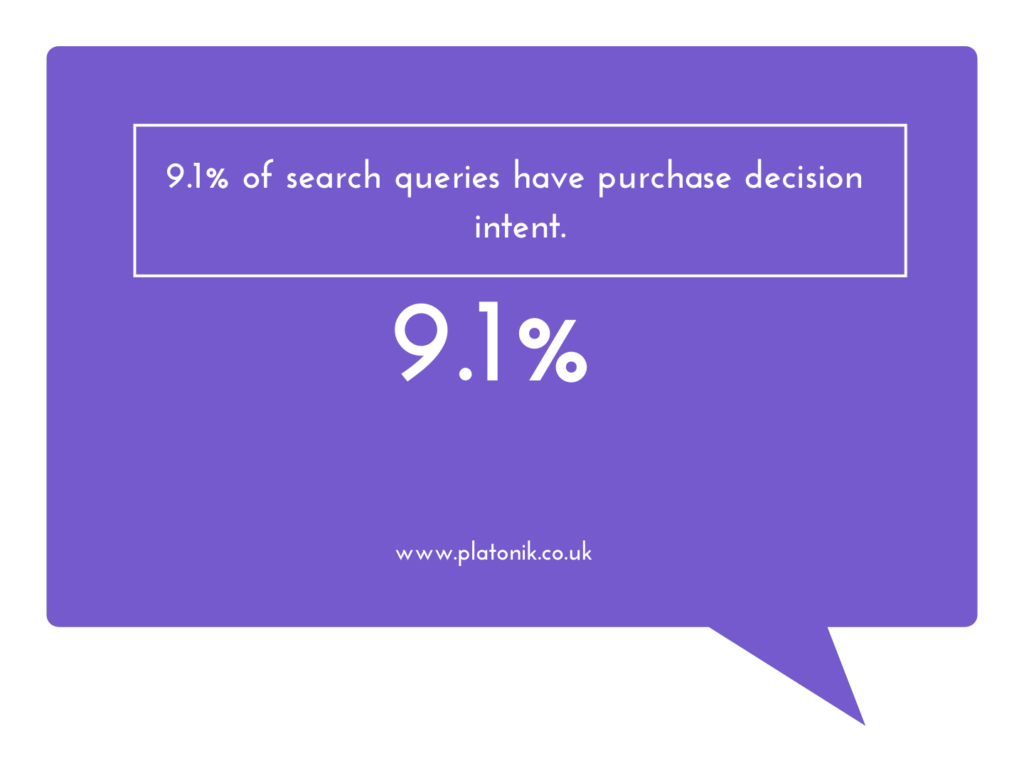
Here’s the full data set used in my study if you wish to analyse or use it yourself.
So what’s the difference between buying intent and purchase decision intent?
Buying intent keywords are any keywords that fall into the 4 stages of the buying process.
- e.g., keywords that contain how to, help, and need (problem recognition stage)
- e.g., keywords that contain best, top, list, service, and for (informational search stage)
- e.g., keywords that contain compare, alternative, versus (evaluation of alternatives stage)
- e.g., keywords that contain buy, nearest, shop, and order (purchase decision stage)
Purchase decision keywords fall into that bottom part of the buying decision process.
Visualising the buying process
In their Messy In The Middle research, Google visualised the buying process in the chart below.
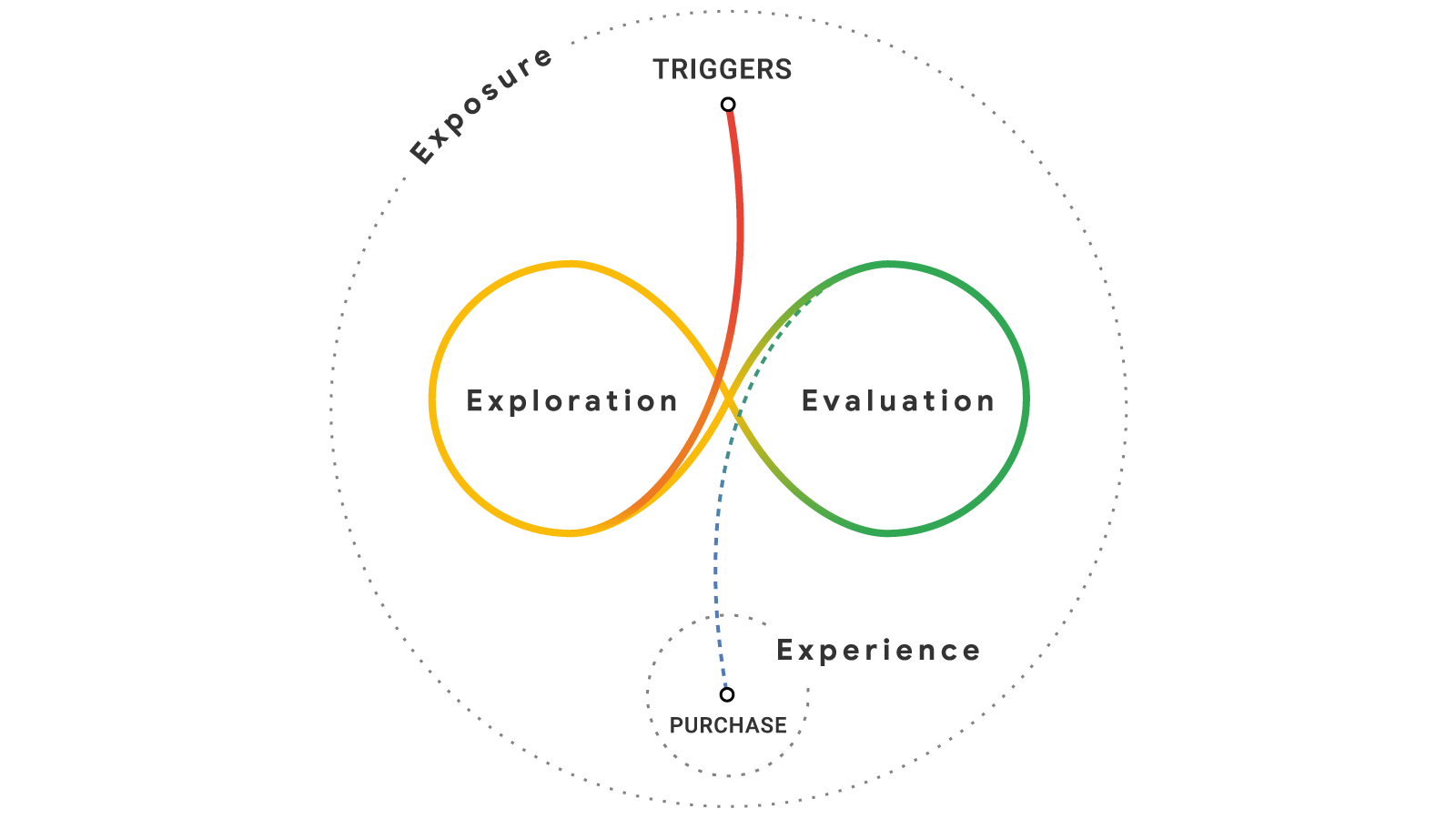
Marketers have used the consumer buying process model for decades before Google, and the two models are very similar.
The buying process lets companies know what consumers search for and use that knowledge to serve them relevant content and adverts.
For example;
Let’s say I search for the “best USB microphone“; this suggests I am looking for information about the best products, but I’m not yet ready to buy.
But if I search “buy USB microphone“, I am much closer to making a purchase decision.
Both “best USB microphones” and “buy USB microphones” have buying intent, but the latter has a stronger buying intent than the former.
So, let’s find buying intent keywords.
Step 1: How to generate a list of buyer intent keywords
Start by using your favourite keyword research tool (mine is Ahrefs) to find a relevant list of keywords about your products or services.

For example, I just completed a research project for a company and generated a list of over 4,000 keywords.
Generate a list of problem recognition keywords
At this stage, the user recognises their problem or need in a particular situation.
To generate problem recognition keywords, filter your seed keywords with the following modifiers.
how, what, where, when, why, issue, fix, improve, increase, reduce, remove, lower, grow.The keywords you choose will depend on whether you have an affiliate marketing, service or e-commerce business, so use these keyword modifiers accordingly.
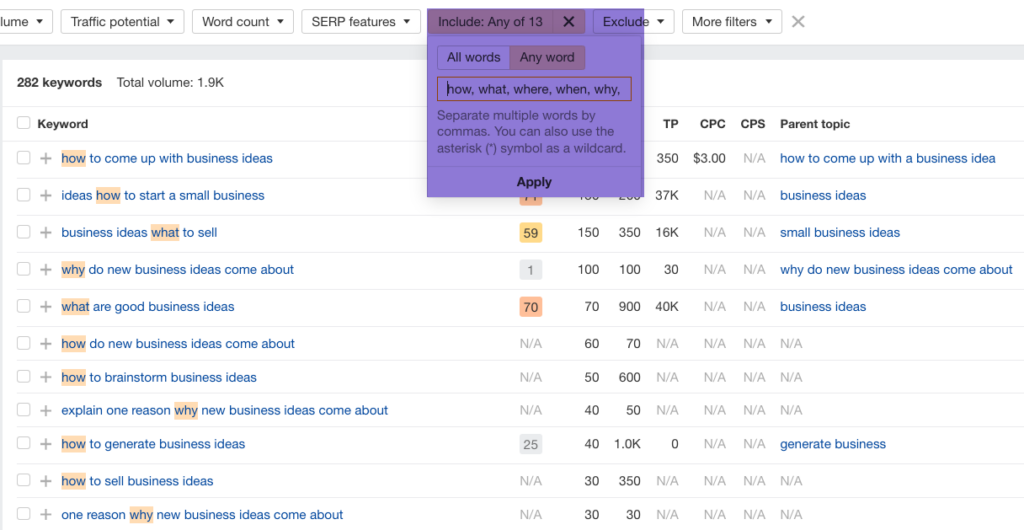
Then add them to your list or export them.
Generate informational search keywords
At the informational search stage, the user researches the product, service or brand that might solve the recognised need.
An informational search usually reveals several products or services for consumers to learn about and consider.
To generate informational search keywords, filter your seed keywords with the following modifiers.
example, guide, learn, tutorial, video, calculator, best, top, bespoke, service, color, colour, company, consultant, expert, for, with, and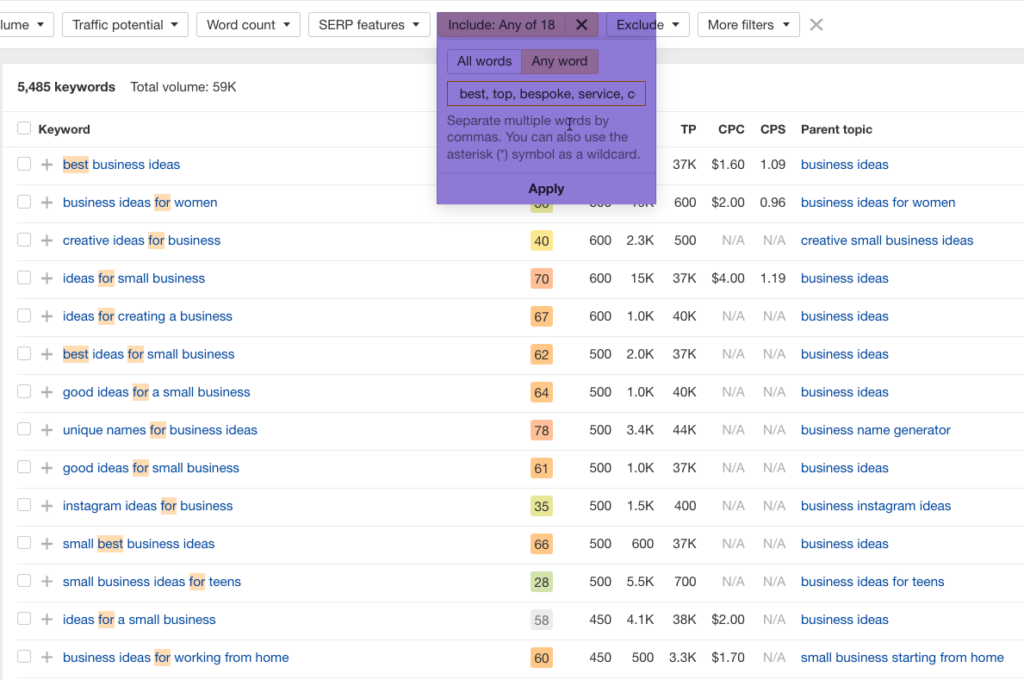
Then add them to your list or export them.
Generate comparison of alternative keywords
At the comparison of alternatives stage, the consumer evaluates the different solutions, products or services they discovered.
To generate comparison of alternative keywords, filter your seed keywords with the following modifiers.
review, compare, comparison, vs, versus, alternative, similar, or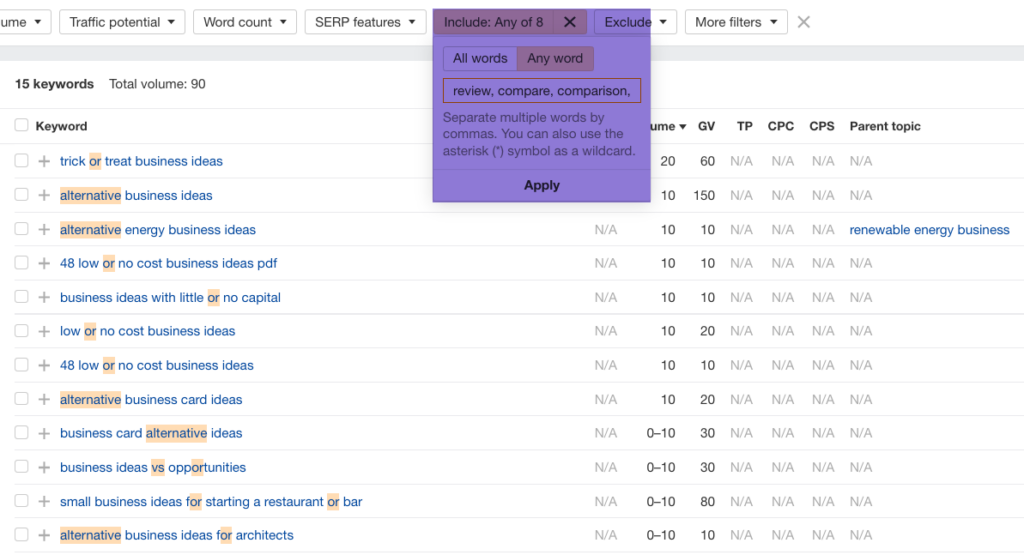
Then add them to your list or export them.
Generate purchase decision keywords
When the customer finds the solution that’s a good match for them at the right price, they are ready to buy.
To generate purchase decision keywords, filter your seed keywords with the following modifiers.
Buy, nearest, cheap, dimensions, size, shop, store, discount, coupon, deal, sale, ebay, amazon, offer, hire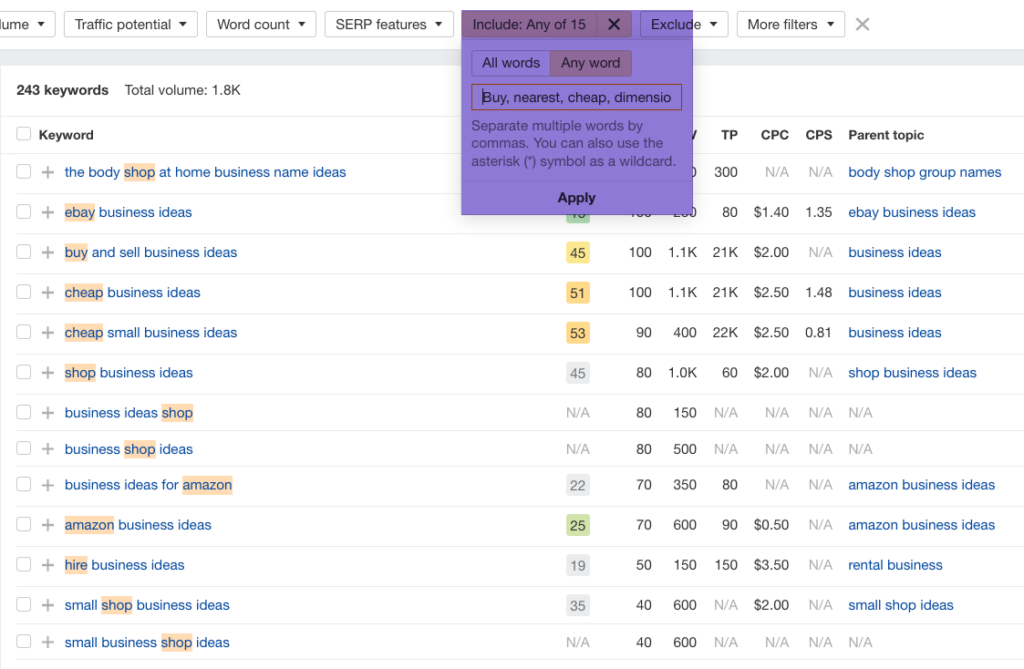
Then add them to your list or export them.
Step 2: Now group the keywords together with the same intent (keyword cluster)
Grouping thousands of keywords with similar intent manually will take too much time, so use a clustering tool like Keyword Cupid or Keyword Insights to do this job for you; 4000 keywords cost me about £72.
You’ll get a keyword clustering spreadsheet report like this.
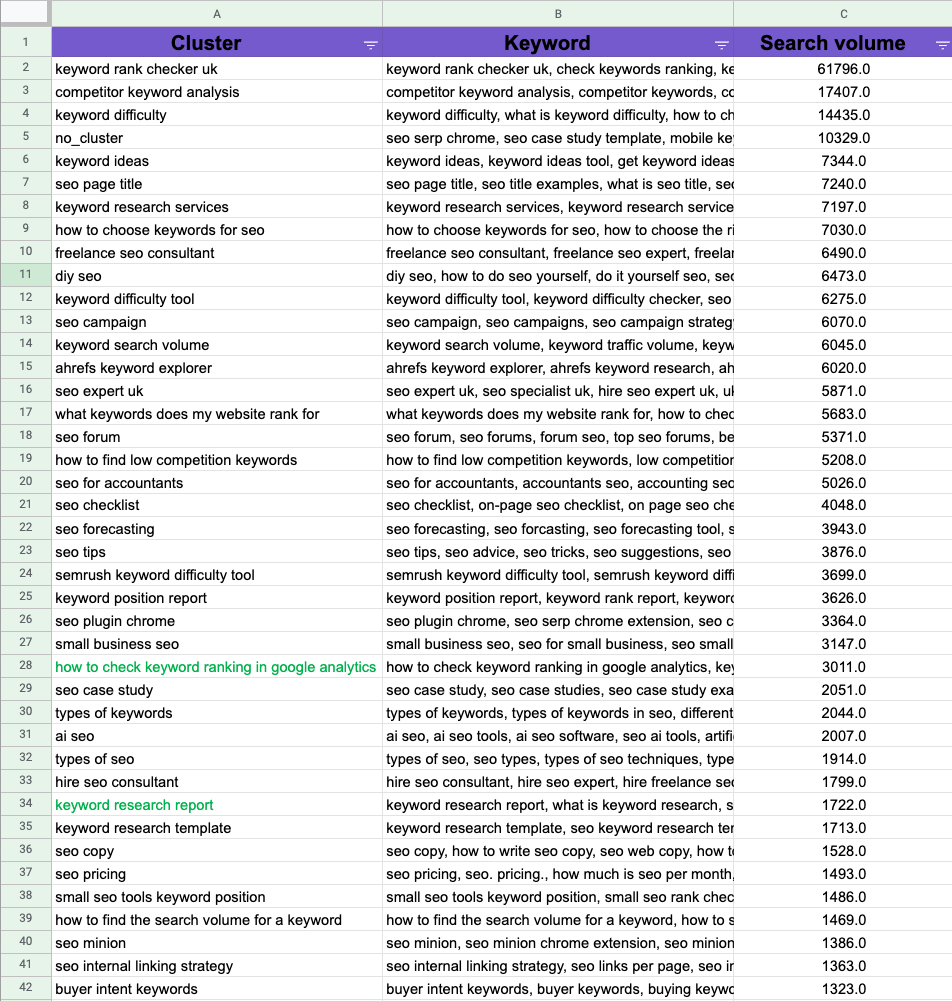
Step 3: How to use buyer intent keywords on your website
- Add a new column,e.g., Add to Plan.
- Look down the list of clusters and select Yes from the Add to Plan if it is relevant.
- Create a column for the content types shown in the screenshot.

4. Google each keyword on your list to determine which kind of content type and content to write for each keyword.
5. Create a sitemap to help you plan where each page will go on your website.
6. Create briefs for your writer, and get the content written and published.
Conclusion
That’s the quick, simple and effective way to find and use buyer intent keywords.
Just because someone searches “buy” does not always mean they will purchase.
That’s why you need to do the keyword research process outlined in this guide to catch buyers at the start, middle and end of their buying journey.

